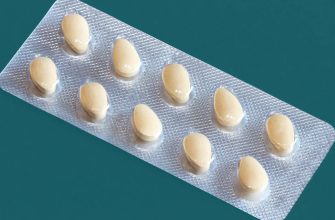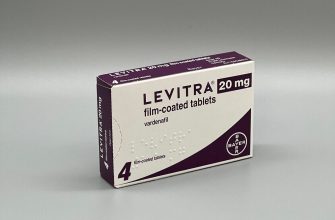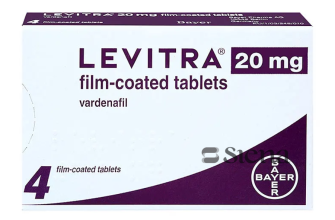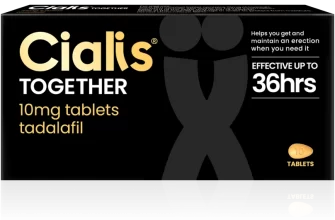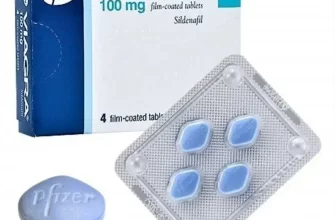Start your search for reliable online generic medications with a trusted certification check. Verify that the online pharmacy possesses all necessary licenses and adheres to strict regulatory guidelines. This single step significantly reduces risks and ensures product authenticity. Many reputable online pharmacies display these certifications prominently on their website.
Next, prioritize pharmacies with transparent pricing and detailed product information. Compare prices across several verified sites, focusing on those that clearly list the active ingredient, manufacturer, and dosage. Avoid suspiciously low prices – they often signal counterfeit products. Look for a clear return policy and customer service contact information readily available.
Finally, protect your personal data. Select pharmacies that utilize SSL encryption (look for the padlock icon in the address bar). Read their privacy policy carefully, ensuring they maintain the confidentiality of your health information and payment details. This proactive approach secures both your health and financial security.
- Quality Online Generics
- Medication Verification
- Secure Transactions
- Prescription Requirements
- Identifying Reputable Online Pharmacies
- Understanding Generic Drug Regulations and Approvals
- FDA Approval Process in the US
- Key Differences in Other Countries
- Comparing Prices and Ensuring Authenticity
- Recognizing Potential Risks of Counterfeit Medications
- Identifying Counterfeit Characteristics
- Consequences of Using Counterfeit Medications
- Protecting Your Personal Information When Buying Online
- Navigating Prescription Requirements and Consultations
- Utilizing Resources for Safe Online Generic Medication Purchases
Quality Online Generics
Prioritize licensed online pharmacies. Check for verification seals from organizations like LegitScript or PharmacyChecker. These independent bodies verify the pharmacy’s legitimacy and adherence to safety standards. Always verify the pharmacy’s physical address and contact information. A trustworthy pharmacy will readily provide this information.
Medication Verification
Confirm the medication’s authenticity by checking the manufacturer’s website for product identification details. Compare the packaging and markings against official images. Look for a unique identification number or code on the packaging to ensure your medication comes directly from a reputable source.
Secure Transactions
Ensure the website uses HTTPS encryption (look for the padlock symbol in the address bar). Pay with secure payment methods, such as PayPal or credit cards with fraud protection. Avoid pharmacies requesting payment via wire transfer or other untraceable methods; these are common red flags for fraudulent operations. Review user reviews from independent sources, such as Trustpilot. Negative reviews regarding delivery, authenticity, or customer service may indicate issues with the pharmacy.
Prescription Requirements
Only use online pharmacies that require a valid prescription from a licensed physician. Upload a clear scan or photo of your prescription. Any pharmacy not asking for a prescription should be avoided. Your health and safety depend on it. Never use generic medications without a doctor’s consultation.
Identifying Reputable Online Pharmacies
Check for verification seals from organizations like LegitScript or PharmacyChecker. These independent verification programs thoroughly assess online pharmacies for compliance with safety and quality standards.
Verify the pharmacy’s physical address. A legitimate pharmacy will list a physical address, not just a PO Box. You should be able to find this information easily on their website.
Look for licensed pharmacists. Reputable online pharmacies employ licensed pharmacists who can answer your questions and provide medication advice. Contact information for these pharmacists should be readily available.
Examine the website’s security. Ensure the site uses HTTPS (look for the padlock icon in your browser’s address bar), which indicates a secure connection that protects your personal information.
Read customer reviews. Trustworthy sites often have numerous positive reviews from verified customers who discuss their experiences with the pharmacy’s service and medication.
Contact the pharmacy directly. Ask specific questions about their operations, licensing, and medication sourcing. A reputable pharmacy will be transparent and readily answer your questions.
| Feature | Reputable Pharmacy | Unreputable Pharmacy |
|---|---|---|
| Verification Seals | Displays LegitScript or PharmacyChecker seals | Lacks verification seals |
| Physical Address | Provides a verifiable physical address | Only lists a PO Box or no address |
| Pharmacist Information | Clearly lists licensed pharmacists and contact details | Lacks pharmacist information or provides vague details |
| Website Security | Uses HTTPS with a secure connection | Uses HTTP or lacks security protocols |
| Customer Reviews | Features many positive reviews from verified customers | Has few or mostly negative reviews |
| Responsiveness | Responds promptly and transparently to inquiries | Is unresponsive or evasive |
Report suspicious online pharmacies to your local authorities. Protecting your health and safety is paramount. This helps to reduce the availability of counterfeit drugs online.
Understanding Generic Drug Regulations and Approvals
Check the FDA website or your country’s equivalent regulatory agency for precise details.
FDA Approval Process in the US
Generic drug approval relies heavily on demonstrating bioequivalence to the brand-name drug. This means the generic drug must have the same active ingredients, dosage form, route of administration, and quality as the original. The FDA doesn’t require full clinical trials to repeat the safety and efficacy studies already completed for the brand-name drug, which speeds up the process. However, rigorous testing for purity, potency, and dissolution is mandatory.
- Bioequivalence Studies: These are critical, comparing the generic’s rate and extent of absorption to the brand-name drug in human volunteers. Results must fall within pre-defined acceptable limits.
- Manufacturing Process Review: The FDA scrutinizes the generic manufacturer’s production processes to ensure consistency and compliance with Good Manufacturing Practices (GMP).
- Data Submission: Manufacturers submit extensive data, including chemistry, manufacturing, and controls information, plus bioequivalence study results, to the FDA for review.
- Approval Decision: After a thorough review, the FDA decides whether to approve the generic drug. The approval is specific to the exact formulation.
Key Differences in Other Countries
While the fundamental principle of bioequivalence is generally accepted globally, specific regulations and approval pathways vary. The European Medicines Agency (EMA) and other international regulatory bodies have their own processes and criteria. These may include differences in the required data, testing methods, and timelines.
- Stringent Testing: Most regulatory bodies employ strict quality control measures.
- Post-Market Surveillance: Ongoing monitoring of approved generic drugs helps identify potential issues.
- National Variations: Be aware that approval in one country doesn’t automatically translate to approval in others. Always check the specific regulatory authority in your region of interest.
Always consult your healthcare provider before using any medication, generic or brand name.
Comparing Prices and Ensuring Authenticity
Check multiple reputable online pharmacies for price comparisons. Don’t rely on just one source!
- Use price comparison websites designed for medication, if available in your region.
- Be wary of unusually low prices; they often signal counterfeit products.
- Consider the total cost, including shipping and handling fees.
Verify the pharmacy’s legitimacy. This step is critical for medication safety and authenticity.
- Look for a physical address and contact information readily displayed on the website. Avoid sites with only PO boxes.
- Check online reviews from multiple sources. Look for consistent positive feedback and a lack of major complaints about product authenticity or shipping issues.
- Confirm their licensing and accreditation with your national regulatory body or a comparable international authority. Many pharmacies display these certifications directly on their site.
- Verify that they use secure payment gateways (HTTPS) to protect your financial details.
Examine the packaging and medication itself. Once you receive your order, carefully inspect it for signs of tampering or counterfeiting.
- Check for inconsistencies in the packaging, such as blurry printing, misspellings, or damage.
- Compare the medication’s appearance (color, shape, markings) to images of authentic medicine readily available online (from the manufacturer or your doctor’s office).
- If there’s any doubt, contact the pharmacy immediately and report your concerns.
Consult your doctor or pharmacist. They can provide valuable guidance on reputable sources and help you identify potential red flags.
Recognizing Potential Risks of Counterfeit Medications
Check the packaging meticulously. Discrepancies in printing, spelling errors, or unusual coloring immediately signal a potential problem. Compare it to images of authentic packaging found on the manufacturer’s official website.
Verify the source. Purchase medications only from licensed pharmacies and reputable online distributors. Beware of suspiciously low prices, which often indicate counterfeit products. Check online reviews and ratings before using a new online pharmacy.
Identifying Counterfeit Characteristics
Examine the pills themselves. Look for inconsistencies in shape, size, color, or texture compared to genuine medications. Differences in taste or smell can also be indicators of counterfeiting. A legitimate pharmacy will gladly provide information about the manufacturer and batch number.
Report suspicions. If you suspect you’ve received a counterfeit medication, immediately contact the relevant authorities, including your local health department and the manufacturer. This protects others from similar risks and allows investigation of potentially dangerous counterfeit drug rings. Do not consume the suspected medication.
Consequences of Using Counterfeit Medications
Counterfeit drugs may contain incorrect dosages of active ingredients, leading to treatment failure or adverse reactions. Worse, they can contain harmful substances or contaminants posing significant health risks, including organ damage or even death. Always consult your doctor if you experience adverse reactions to any medication.
Protecting your health requires diligence. By following these steps, you significantly reduce your risk of encountering counterfeit medications and maintain safer online medication practices.
Protecting Your Personal Information When Buying Online
Use strong, unique passwords. Avoid easily guessable information like birthdays or pet names. Consider a password manager to help you create and securely store complex passwords for different sites.
Check the website’s security. Look for “https” in the address bar and a padlock icon. This indicates a secure connection using SSL encryption.
Review the website’s privacy policy. Understand how your data will be collected, used, and protected. Look for clear statements on data retention and sharing practices.
Pay with secure methods. Credit cards offer better buyer protection than debit cards. Consider using platforms like PayPal that provide an extra layer of security.
Be cautious of phishing scams. Legitimate pharmacies will never ask for sensitive information via email or unsolicited phone calls. Verify the website’s authenticity independently.
| Data Type | Protection Recommendation |
|---|---|
| Email Address | Use a dedicated email address for online purchases. |
| Payment Information | Avoid saving payment details on websites unless absolutely necessary. |
| Shipping Address | Use a separate shipping address if you have security concerns. |
Keep your software updated. Install security updates for your operating system and antivirus software to protect against malware and viruses.
Use a VPN (Virtual Private Network) for added security, especially when using public Wi-Fi. A VPN encrypts your internet traffic, protecting your data from interception.
Monitor your bank and credit card statements regularly. Report any unauthorized transactions immediately to your bank or credit card company.
Navigating Prescription Requirements and Consultations
Always obtain a valid prescription from a licensed medical professional before ordering any medication online. This prescription should clearly state the drug name, dosage, and quantity.
Reputable online pharmacies will require you to upload a copy of your prescription during the ordering process. Follow their instructions carefully; blurry or illegible images may cause delays.
Some online pharmacies offer telehealth consultations. These virtual appointments allow you to discuss your medical history and needs with a doctor before receiving a prescription. Check if this service is available and consider it if you lack a current prescription.
Be aware that consultation fees may apply. Compare the costs of the consultation with your overall medication expenses to ensure it’s cost-effective for you.
During your consultation, be open and honest about your medical history, including allergies and current medications. This information is critical for safe prescription management.
After the consultation, expect to receive your prescription electronically. Double-check all details on the prescription before proceeding with the order.
Legitimate online pharmacies comply with strict regulations. Verify the pharmacy’s licensing and accreditation details before purchasing medication. Look for easily accessible contact information and customer support options.
Never share your personal or medical information on unverified websites. Proceed only through secure channels, indicated by “https” in the web address.
If you encounter issues or have questions, contact the online pharmacy’s customer support directly. They should be readily available via phone, email, or live chat.
Utilizing Resources for Safe Online Generic Medication Purchases
Verify the online pharmacy’s legitimacy using LegitScript or similar verification services. These independent organizations assess pharmacies based on their compliance with safety and regulatory standards.
Check the pharmacy’s license and registration details. Look for clearly displayed information regarding their physical address, contact information, and licensing board details. Avoid pharmacies lacking this transparency.
Scrutinize the website for secure payment gateways, indicated by “https” and a padlock icon in the address bar. This signifies secure encryption protecting your personal and financial data.
Read customer reviews and testimonials from verified sources. Pay close attention to comments regarding shipping times, order accuracy, and customer service responsiveness. Consider the overall sentiment rather than individual opinions.
Consult your doctor or pharmacist before purchasing any medication online. They can advise on suitable generic alternatives and address any potential drug interactions or health concerns.
Compare prices from multiple reputable online pharmacies. This helps you find the best value without compromising safety. Be wary of unusually low prices, which may indicate counterfeit medications.
Understand the return and refund policies. A reliable pharmacy will have clearly defined policies outlining procedures for returns, exchanges, and refunds in case of issues with your order.
Familiarize yourself with the pharmacy’s shipping and handling procedures. Look for details on shipping times, tracking information, and insurance policies to protect your medication shipment.
Report suspicious online pharmacies to relevant authorities. Help protect others by reporting websites that appear unsafe or engage in deceptive practices.




